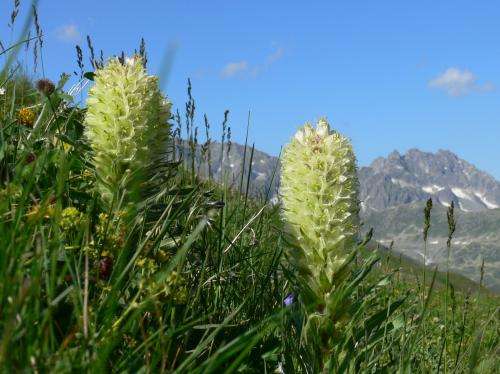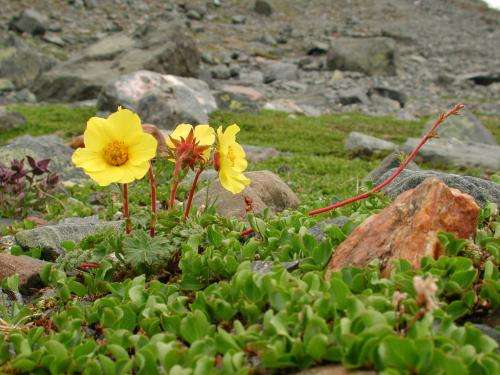Glacial history affects shape and growth habit of alpine plants

During the Ice Ages the European Alps were covered by a thick layer of ice. Climate fluctuations led to great changes in the occurrences of plants: They survived the cold periods in refugia on the periphery of the Alps which they then repopulated after the ice had drawn back. Such processes in the history of the earth can be detected by molecular analysis as "genetic fingerprints": refugia and colonization routes can be identified as genetic groups within the plant species. Thus, the postglacial colonization history of alpine plants is still borne in plants alive today.
Yellow Bellflower and Creeping Avens
So far, it was unknown if the Ice Ages also affected the structure and growth habit of alpine plants. Prof. Jürg Stöcklin and his colleagues from the Institute of Botany at the University of Basel were now able to proof this phenomenon in two publications. The glacial periods have left marks on the Yellow Bellflower and the Creeping Avens that are visible to the naked eye. The ancestors of these plants survived the Ice Ages in different glacial refugia which led to the fact that today they show genetic differences in their external morphology and in important functional traits.
Notably, the Yellow Bellflower's inflorescence and timing of flowering differ between plants from the Eastern Alps and plants from the central or western parts of the Alps. Regarding the Creeping Avens, plants from the Western Alps show significantly more offshoots but have fewer flowers than those from the Eastern Alps, while the dissection of the leaves increases from West to East.
Plants are more adaptable than assumed
The Botanists from Basel further discovered that the variations within one species are partly due to natural selection. For example, the timing of flowering in the Yellow Bellflower can be explained with variability in growing season length. Plants shorten their flowering duration as adaptation to the shorter growing seasons at higher elevations.

"The findings are important for understanding the effects that future climate changes may have on plants", says Stöcklin. "The glacial periods have positively affected the intraspecific biodiversity." Furthermore, the scientists were able to show that plants are more adaptable than has been assumed previously. Climate changes do have an effect on the distribution of species; however, alpine plants also possess considerable skills to genetically adapt to changing environmental conditions.
More information:
Scheepens JF, Frei ES, Stöcklin J (2013), Glacial history affected phenotypic differentiation in the Alpine plant, Campanula thyrsoides
PLOS ONE. DOI: 10.1371/journal.pone.0073854
Eva, S. et al. Phenotypic differentiation in a common garden reflects the phylogeography of a widespread Alpine plant,
Journal of Ecology, Volume 100, Issue 2, pages 297–308, March 2012. DOI: 10.1111/j.1365-2745.2011.01909.x
Journal information: PLoS ONE , Journal of Ecology
Provided by University of Basel





















